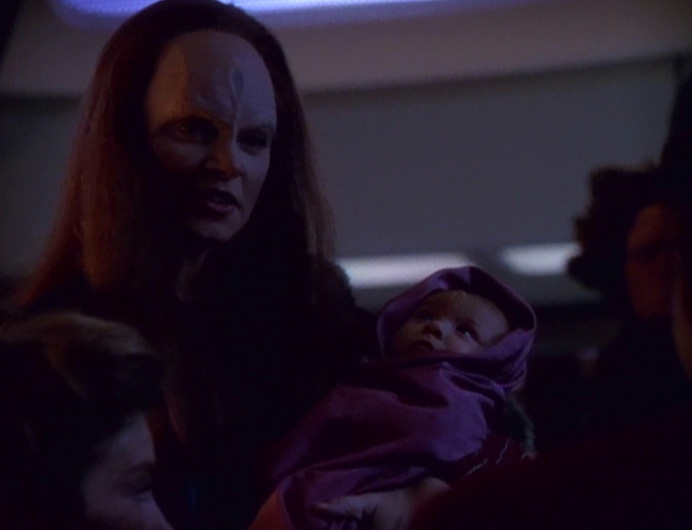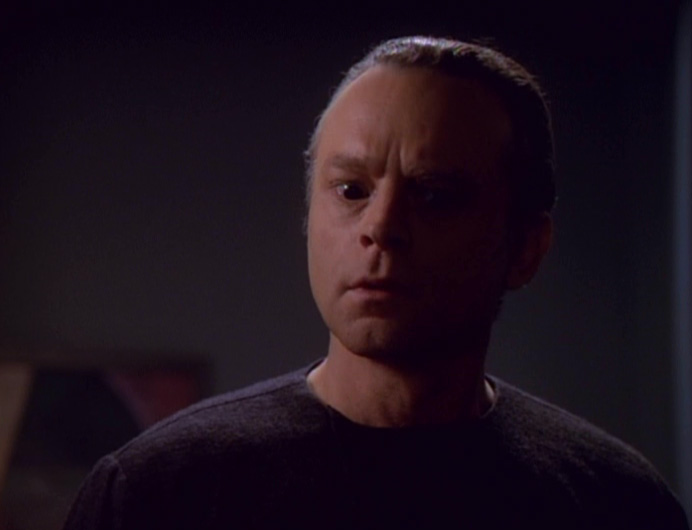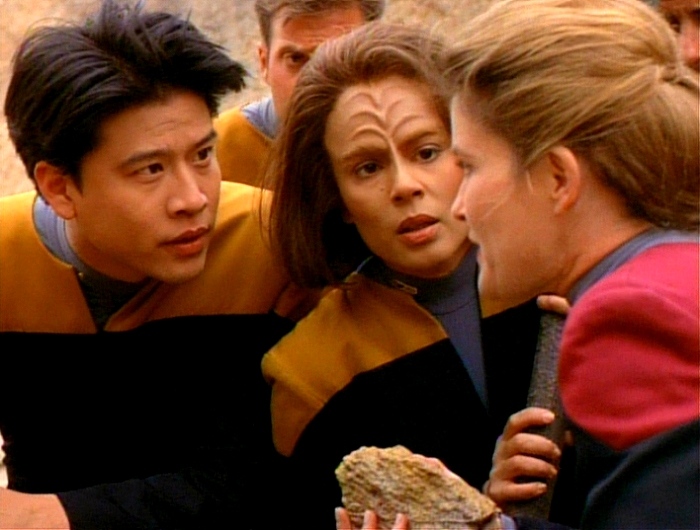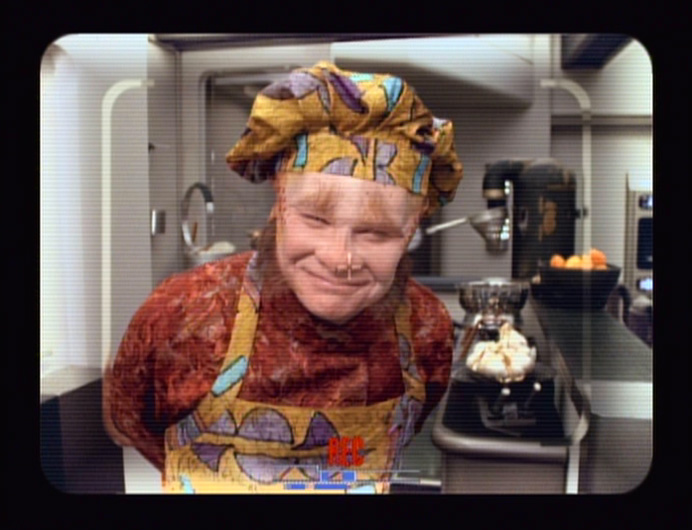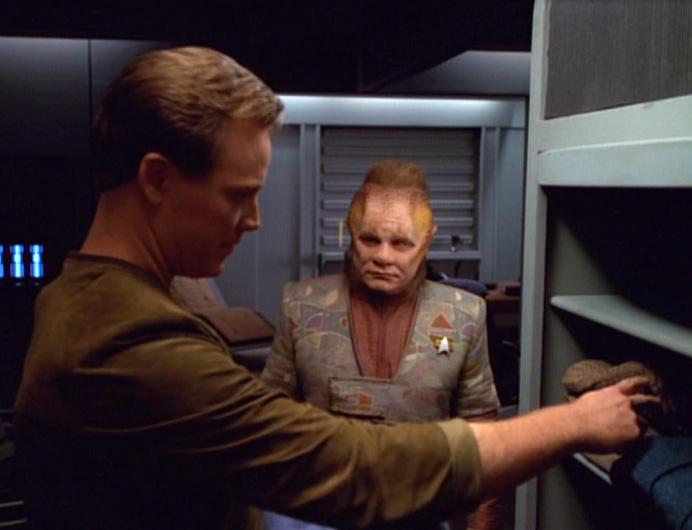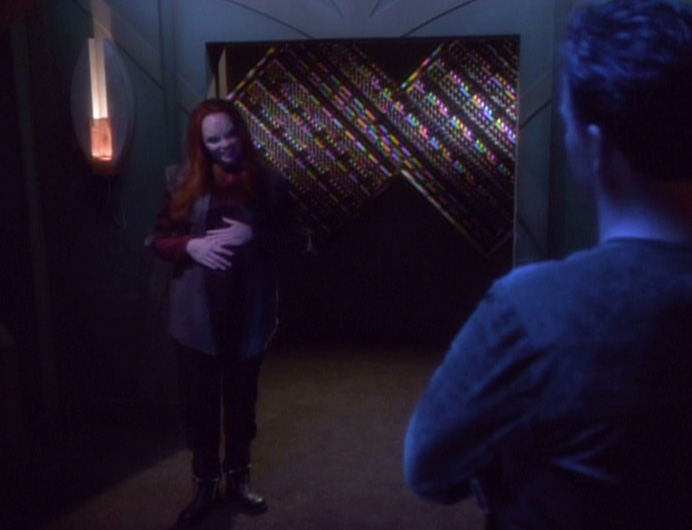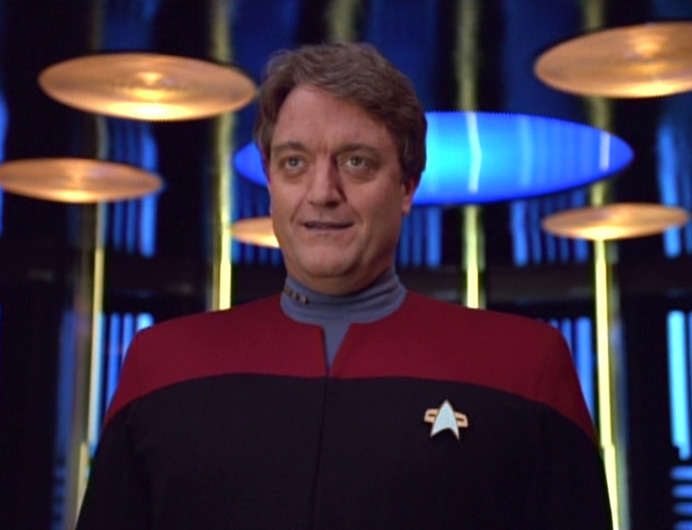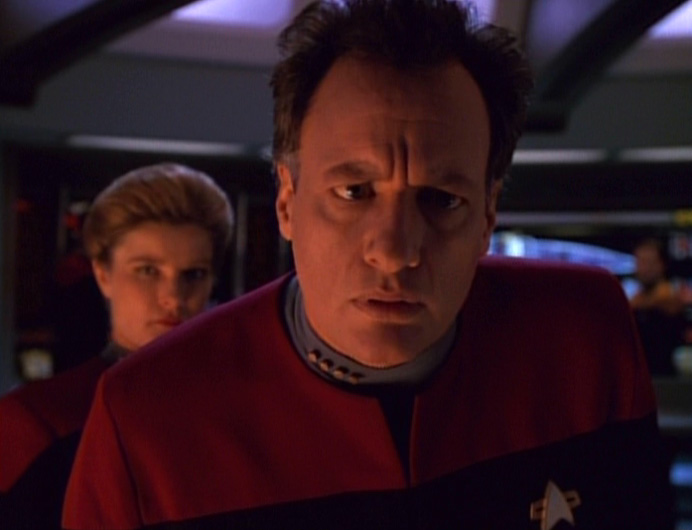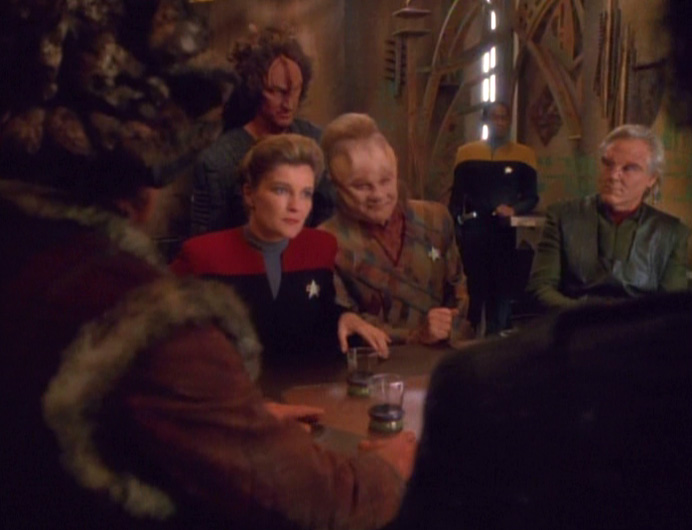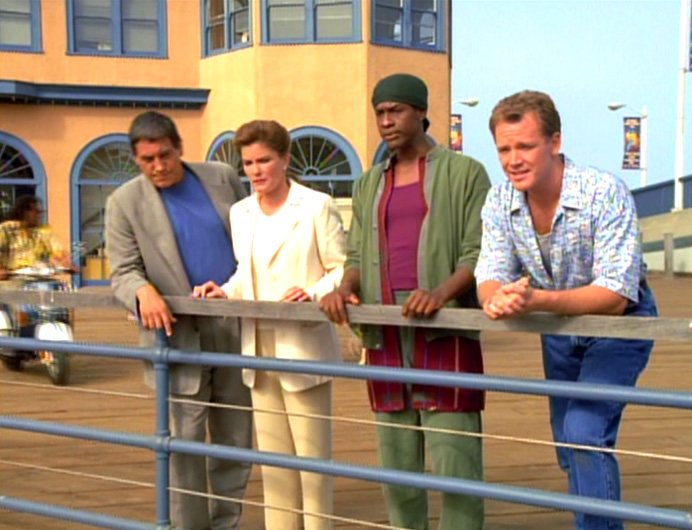
Part one: Voyager encounters a Federation time ship (what-the-what?) from the future, whose Commander Braxton (Allan Royal) is intent on destroying Voyager to prevent the destruction of Earth’s solar system in the 29th century. Janeway tries to stop him and Voyager is thrown back in time (naturally) to 1996. Once there, Janeway, Chakotay, Tuvok and Paris go undercover and discover that Henry Starling (Ed Begley Jr.) is a ’90s tech mogul who used Braxton’s time ship (that crashed on Earth in the late ’60s) to build his tech empire — essentially creating the computer revolution of the 20th century. Now out of ideas, Starling is set to use Braxton’s recovered ship to get more technology from the future. When Janeway tries to stop him, Starling steals much of Voyager’s database — and the Doctor.
Part two: Paris and Tuvok recover the Doctor (now equipped with a mobile emitter from Starling) and Janeway beams Starling aboard Voyager. But Chakotay and Torres — on board a shuttle — crash and are taken captive by (no joke) a militia group. They’re eventually recovered, but not before Starling escapes and leaves in his stolen time ship — intent on going into the future to recover more technology “for the betterment of mankind.” The crew eventually stops him and resets everything to where Braxton (with no knowledge of the events of the two-parter) comes from the future to investigate Starling’s time anomaly. All is set right — but Braxton tells Janeway that the Temporal Prime Directive won’t allow him to let them stay in the Alpha Quadrant. The crew then resumes its long voyage home back in the 24th century.
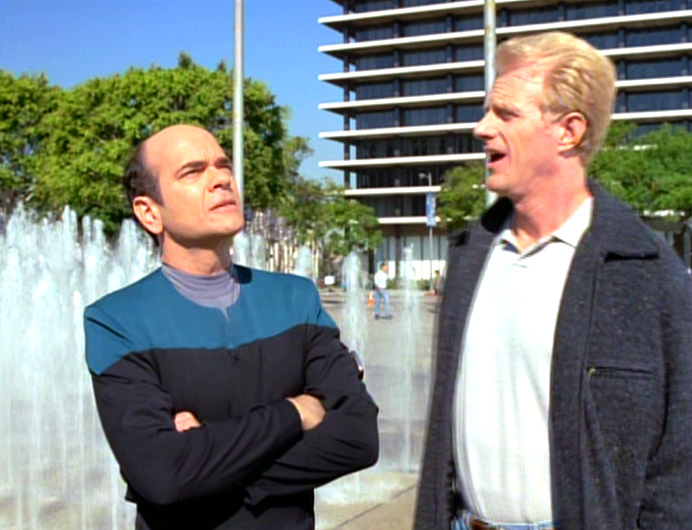
Why it’s important
Well, if not for the events of this episode, the computer revolution of the late 20th century would have never happened. So, that’s a pretty big deal — and a nice touch by the creators. Beyond that, the Doctor is freed from sickbay for the rest of the series, as his new mobile emitter from Starling allows him to now be a full-fledged member of the crew. As the Doctor was the breakout character of the series at this point, finding a believable way for him to be more involved was a good and well-executed idea.
What doesn’t hold up
Well, the time travel nonsense is just, well, nonsense. Starting in early Voyager and mid DS9, the creators clearly decided that having time travel make any sense was a lost cause — allowing effect to precede cause, etc. This was something Voyager was doing almost immediately after the pilot, so it’s not even worth getting too excited about.
Beyond that, it’s goofy that Janeway would send Tuvok and Torres on missions where they could have been discovered as aliens on Earth. Granted, this happened with Spock in “Star Trek IV: The Voyage Home”, but that situation was different in that Kirk only had seven crew members to choose from. Although I suppose Kirk did bring Spock with him to Earth in the 1960s in “Assignment: Earth”, so maybe I shouldn’t be too hard on Janeway.
Finally, the death of Starling at the end of the episode — by way of a torpedo fired by Janeway as he’s about to enter a “temporal inversion” — would have likely raised flags on Earth, right? Put another way, if Bill Gates just disappeared — after an incident where an unknown aircraft flew out of his office window in downtown LA — wouldn’t there have been some questions?
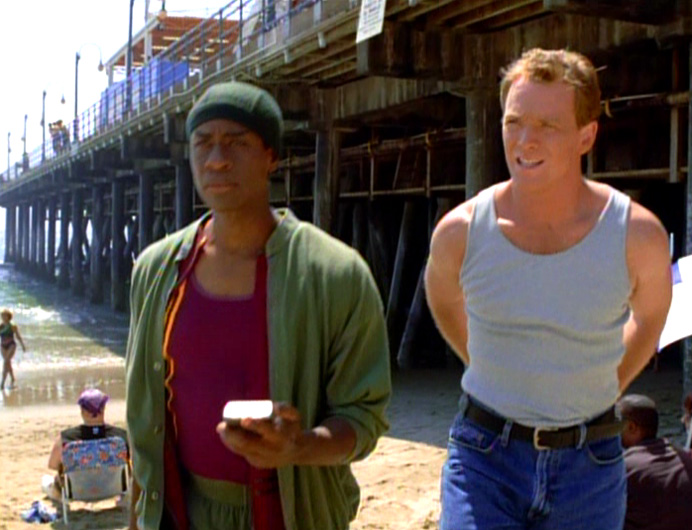
Final thoughts
This is a fairly entertaining two-parter that utilized the cast well. The Paris/Tuvok combo was always one of Voyager’s best and the Doctor was in rare form in his encounters with Starling. That said, Rain Robinson, the 20th-century human who helps Paris and Tuvok (played by Sarah Silverman, before she was famous) is pretty inconsistent as characters go and almost a ’90s cliche who drives a 1960s hippy van, for some reason. Some of the scenes with her and Paris work but others are just painful.
I did sort of like the irony that Braxton wouldn’t let Voyager stay in the Alpha Quadrant because of the Temporal Prime Directive. In the long history of Star Trek, our heroes often refused assistance to incredulous aliens because of the regular Prime Directive. Turnabout is fair play, I suppose.
Coming next week …
Q’s back and he’s gonna be in trouble.

